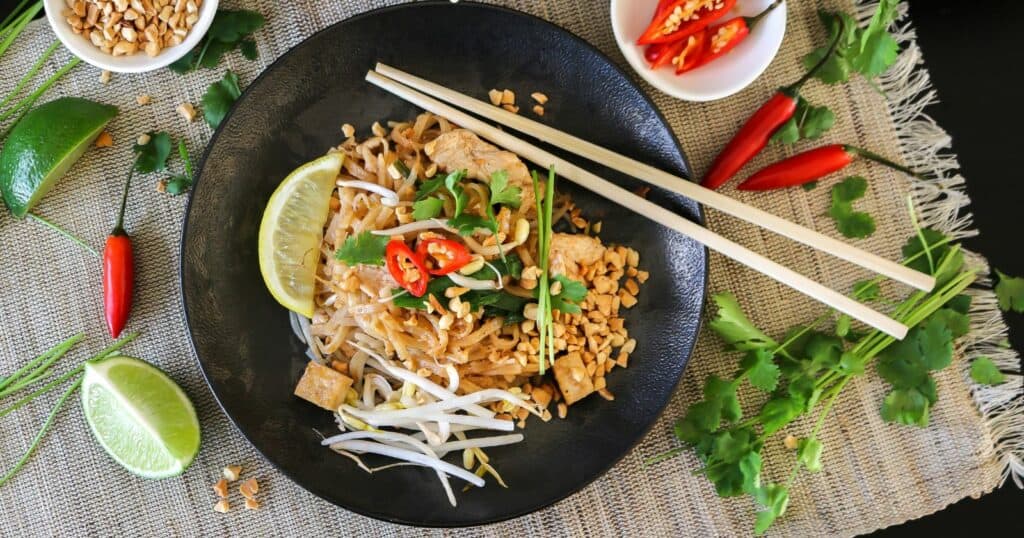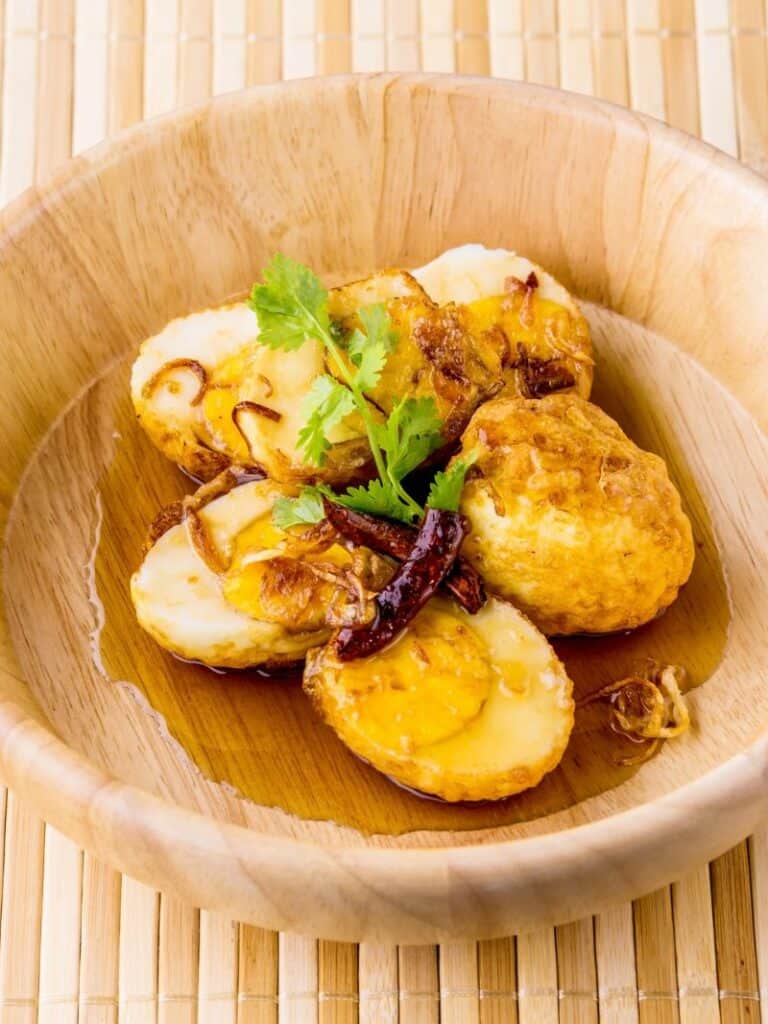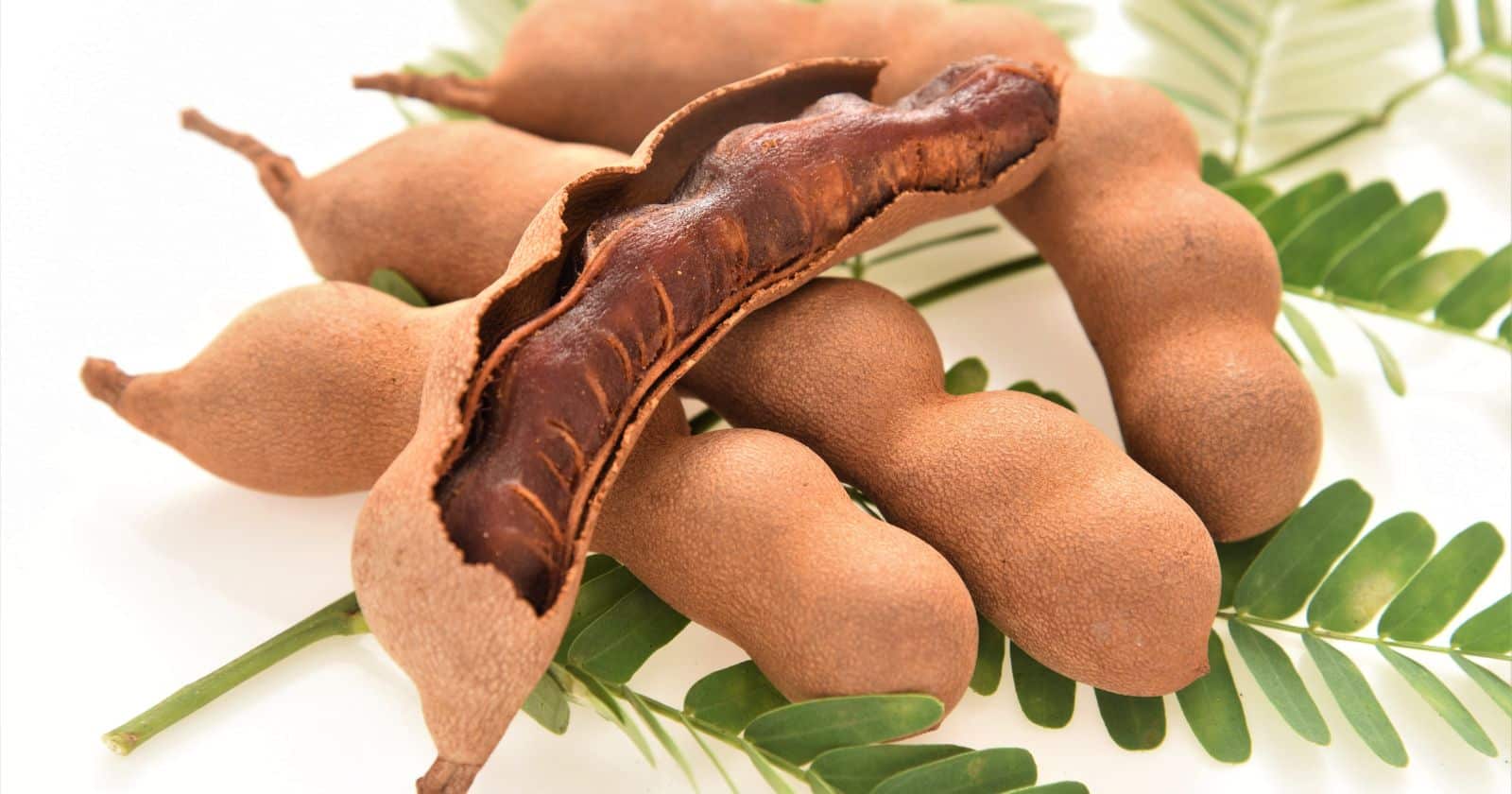Have you ever tasted a sour, tangy, and slightly sweet dish all at once? If you have, you’ve probably experienced the unique flavor of tamarind.
But the name might not ring a bell for those who haven’t tried it. And if you love to cook or explore new cuisines, not knowing about tamarind might mean missing out on a new world of flavor.
Tamarind is a tropical fruit that grows on tall trees and is used widely in cuisines across Asia, Africa, and South America. It has a distinct taste comes from its high acidity content and is used in dishes to add sourness, depth, and complexity. In addition to its culinary uses, tamarind is also known for its medicinal properties and is used to treat digestive issues, fever, and sore throat.
This blog post will explore the world of tamarind and its many uses. We’ll take a closer look at how it’s used in different cuisines, the nutritional benefits of tamarind, and even how to make tamarind paste from scratch.
So if you’re ready to add excitement to your cooking and discover a new flavor sensation, read on!
What is Tamarind?

Tamarind is a unique fruit that is native to Africa and has a sour, tangy taste. The fruit is often used in savory dishes such as curries, making it an indispensable ingredient in many cuisines worldwide, including Indian, Thai, and Mexican.
Tamarind can also be used in sweet dishes as an alternative to sugar for a richer flavor. This versatile fruit can be found in many forms – fresh, dried, and concentrated – adding depth and complexity to many recipes.
Not only is tamarind full of flavor, but it also offers numerous health benefits! It has high amounts of vitamins A and C that help support healthy immunity, improve digestion, regulate blood sugar levels, and provide antioxidant protection.
Additionally, the fruit contains dietary fiber, which could help lower cholesterol and aid weight loss.
Tamarind may even have anti-inflammatory properties, which can be beneficial for reducing pain and inflammation associated with arthritis or other chronic conditions.
From savory to sweet dishes, tamarind adds a unique flavor that enhances the richness of any recipe.
With its impressive list of health benefits included in the package, this versatile fruit is proving itself to be an invaluable part of any kitchen pantry!
Health Benefits Of Tamarind
Tamarind is a popular ingredient with numerous health benefits. It has long been used in traditional medicine to treat various ailments, and its prevalence in modern-day cuisines continues to grow.
Tamarind contains essential vitamins and minerals such as iron, potassium, and magnesium and is rich in dietary fiber.
Its high amounts of minerals and vitamins are beneficial for improving digestion, reducing cholesterol levels, and promoting weight loss.
Here are some health benefits of tamarind:
- Rich in vitamins and minerals such as vitamin C, B vitamins, calcium, and iron
- High in antioxidants that help protect against cell damage and chronic diseases
- It may help lower blood sugar levels and improve insulin sensitivity.
- Contains fiber that promotes digestive health and may reduce the risk of colon cancer
- Has anti-inflammatory properties that may help reduce pain and swelling in conditions such as arthritis
- It may help lower cholesterol levels and reduce the risk of heart disease.
- It contains compounds that have antibacterial and antifungal properties, making it helpful in treating infections
- It may help boost the immune system and protect against infections.
- It can be used as a natural laxative to relieve constipation.
- It may have anticancer properties and help prevent the growth and spread of cancer cells.
It’s important to note that while tamarind has many potential health benefits, it should be consumed in moderation as it also contains high levels of tartaric acid, which can cause tooth decay and enamel erosion if consumed in excess.
Tamarind In Cooking: Culinary Uses And Forms
Tamarind is a versatile ingredient that is used in many cuisines around the world. It comes in various forms: blocks, concentrates, pastes, and sauces.
This sour and slightly sweet ingredient makes it an ideal flavor enhancer for curries, chutneys, sauces, and more. Tamarind can be found in most grocery stores and ethnic markets, or it can be bought online.
With its unique flavor profile and numerous uses, tamarind is an ingredient that all home chefs should become acquainted with.
It can be used in various dishes, from curries to chutneys to sauces to marinades.
The key to using tamarind successfully is understanding the varying forms and their appropriate uses to make the most of this fantastic culinary tool.
If you don’t know where to start, here are some examples of savory dishes and desserts that feature tamarind in their recipes:
Tamarind chicken curry
A flavorful and spicy chicken curry made with tamarind paste, coconut milk, and a blend of Indian spices.
Pad Thai with tamarind sauce

Pad Thai is a classic Thai dish made with rice noodles, shrimp, vegetables, and a tangy tamarind sauce.
Tamarind-glazed pork chops

Tender pork chops marinated in a mixture of tamarind paste, soy sauce, and honey, then grilled to perfection.
Egg with tamarind sauce

Egg with tamarind sauce is a delicious and easy-to-make dish for breakfast or lunch. You’ll need boiled or fried eggs and tamarind sauce to make this dish.
Tamarind sauce can be made from tamarind paste or concentrate, sugar, and a blend of Indian spices like cumin, coriander, and turmeric.
Tamarind fish curry
A fragrant and spicy curry made with fish fillets, tamarind paste, coconut milk, and a blend of Indian spices.
Bhelpuri

A sweet and tangy sauce made with tamarind paste, dates, and spices, often served with Indian snacks like samosas or chaat.
Tamarind sorbet
A refreshing sorbet made with tamarind paste, sugar, and water for a tangy and sweet treat.
Tamarind and jaggery ice cream
A rich and creamy ice cream made with tamarind paste and jaggery (unrefined cane sugar) for a unique and sweet-tart flavor.
Tamarind candy or toffee

A sweet and sour candy made with tamarind paste and sugar, often coated in chili powder or salt for an extra kick.
24 Ounce
Where to Buy Tamarind?
Tamarind can be purchased at most grocery stores and specialty food markets. Look for tamarind paste or concentrate in the international or Asian food section of your local supermarket. Some health food stores may also carry tamarind in various forms, including tamarind pods or powder.
If you prefer to shop online, many online retailers offer tamarind products, including tamarind paste, concentrate, and candies.
When buying tamarind, be sure to check the expiration date and choose a fresh product that is free of additives or preservatives.
Tamarind Substitutes
Lime or Lemon Juice
Lime or lemon juice can add a tangy, acidic flavor to dishes that call for tamarind. Use about 1 tablespoon of juice per 1 teaspoon of tamarind paste.
Vinegar
Any type of vinegar, such as apple cider or rice vinegar, can be used as a substitute for tamarind. Use about 1 tablespoon of vinegar per 1 teaspoon of tamarind paste.
Pomegranate Molasses
Pomegranate molasses is a thick, tart syrup that can be used as a substitute for tamarind. Use about 1 tablespoon of pomegranate molasses per 1 teaspoon of tamarind paste.
Amchur Powder
Amchur powder is made from dried green mangoes and has a tangy, sour flavor that is similar to tamarind. Use about 1 teaspoon of amchur powder per 1 teaspoon of tamarind paste.
Worcestershire Sauce
Worcestershire sauce is a condiment that is often used in meat dishes and has a tangy, slightly sweet flavor that can be used as a substitute for tamarind. Use about 1 tablespoon of Worcestershire sauce per 1 teaspoon of tamarind paste.
When using these substitutes, remember that the flavor and texture may not be the same as tamarind, so adjust the amount to taste and experiment with different combinations to find the best substitute for your dish.






